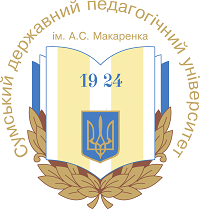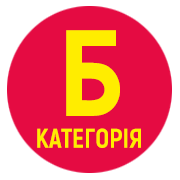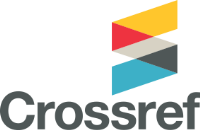CHOREOGRAPHIC TRAINING IN RHYTHMIC GYMNASTICS: INTEGRATION OF TECHNICAL AND ARTISTIC ASPECTS FOR THE DEVELOPMENT OF SPORTS SKILLS
DOI:
https://doi.org/10.32782/olimpspu/2025.1.16Keywords:
choreographic training, rhythmic gymnastics, technical aspects, artistic aspects, sportsmanship, expressiveness, creative approach, group performancesAbstract
The article is devoted to a comprehensive analysis of choreographic training in rhythmic gymnastics, in particular, to the study of the relationship between technical and artistic aspects that contribute to the development of sportsmanship. Theoretical analysis of scientific and methodological literature showed the importance of choreography as a basis for the formation of expressive technique for performing sports elements and harmonious interaction with objects, which is an integral part of the training process in rhythmic gymnastics. It was found that the key components of choreographic training: classical exercises, folk dances, modern choreography have a powerful impact on the development of physical qualities, such as flexibility, coordination, plasticity and strength. In addition, attention should be paid to the role of a creative approach in creating dance compositions, which not only help athletes improve technical skill, but also significantly increase the level of emotional expressiveness in performances. An important aspect is the ability to express character and mood through movement, which becomes the basis for creating vivid images, special attention is paid to the development of choreographic expressiveness, which is critically important for team skill. The generalization of the results of scientific research indicates that choreographic training in rhythmic gymnastics is a multifaceted process that encompasses not only the technical, but also the creative development of athletes. The interaction of technical and artistic aspects allows to significantly improve the level of skill, expressiveness and emotional richness of performances. The importance of a systematic approach to training, a combination of physical and psychological aspects, as well as creative development in cooperation with a choreographer makes the training of athletes more comprehensive and effective, which leads to high achievements in rhythmic gymnastics. These conclusions focus on physical training that is integrated with artistic performance. It is important to improve the technique of sports elements, such as rotations, jumps, acrobatic exercises, combined with the ability to keep balance and maintain the aesthetic appearance of movement. The training system should combine physical and psychological loads, allowing to achieve maximum results in performances, while maintaining the individuality of each athlete.
References
Горських Ю. Гімнастика в хореографії: навчальний посібник для студентів-хореографів. Суми : ФОП «Цьома С.П.», 2016. 92 с.
Коваленко Я., Болобан В. Побудова змагальних композицій групових вправ у художній гімнастиці. Теорія і методика фізичного виховання і спорту. 2017. № 1. С. 20–23.
Різатдінова Г.С., Литвиненко Ю.В. Технічна підготовка в художній гімнастиці: проблеми та перспективи. Сучасні біомеханічні та інформаційні технології у фізичному вихованні і спорті: Матеріали V Всеукр. електр. конф., 18 травня 2017 р. К.: НУФВСУ, 2017. С. 34–36.
Сосіна В.Ю. Шляхи інтеграції хореографічного мистецтва та техніко-естетичних видів спорту. Танцювальні студії. 2018. Вип. 1. С. 81–90.
Ткаченко І. Оздоровче значення занять з гімнастики та хореографії у підготовці фахівців у галузі фізичної культури. Здоров’я нації і вдосконалення фізкультурно-спортивної освіти: І Міжнародна науково-практична конференція. (3 – 4 жовтня 2019 року). Харків, 2019. С. 87–90.
Ткаченко І., Чень Чжень. Методики викладання класичного танцю для спортсменів-гімнастів. Рriority directions of science and technology development: V Міжнародна науково-практична конференція (24 – 26 січня 2021 року, м. Київ, Україна). Київ, 2021. С. 911–916.
Тодорова В. Г. Сучасний стан і перспективи хореографічної підготовки в складнокоординаційних видах спорту. Наука і освіта. 2015. С. 119–124.
Цвєткова Л. Ю. Методика викладання класичного танцю: підручник. 2 вид. Київ : Альтерпрес, 2007. 324 с.







